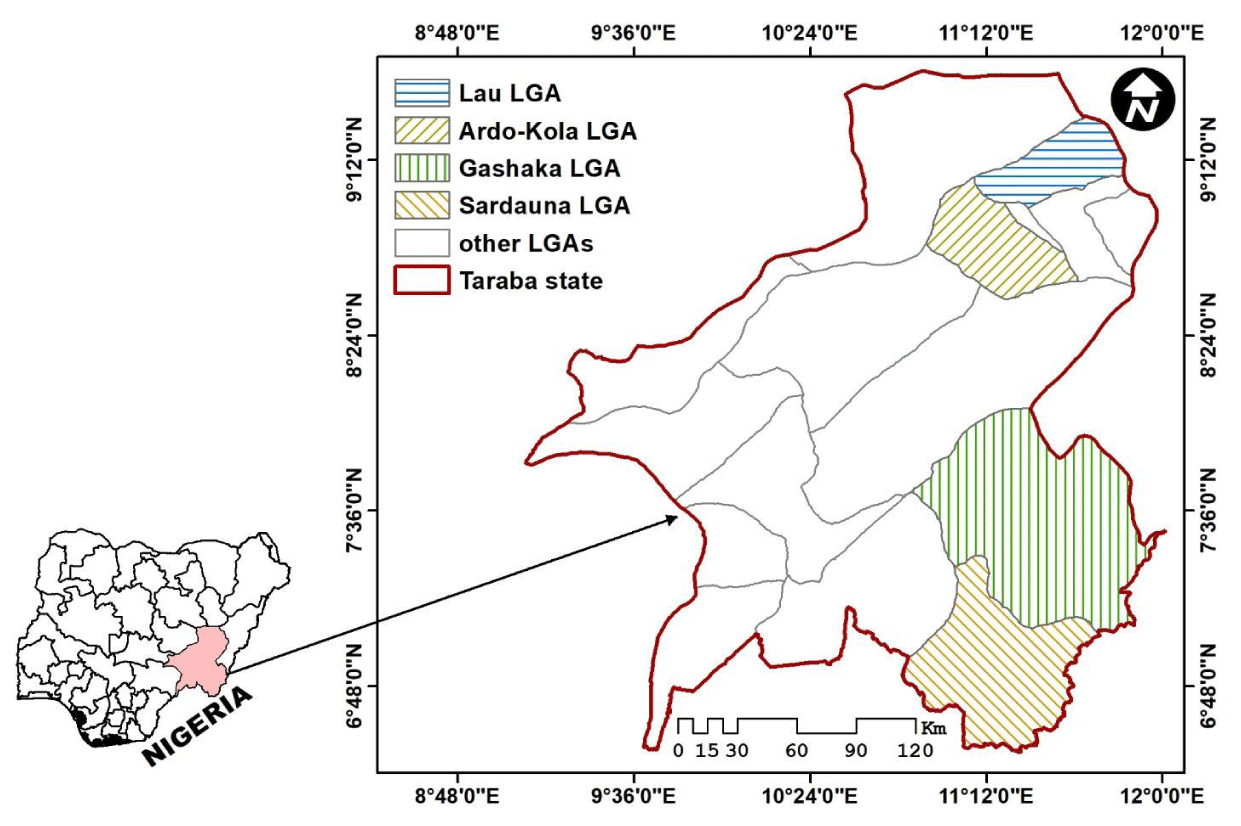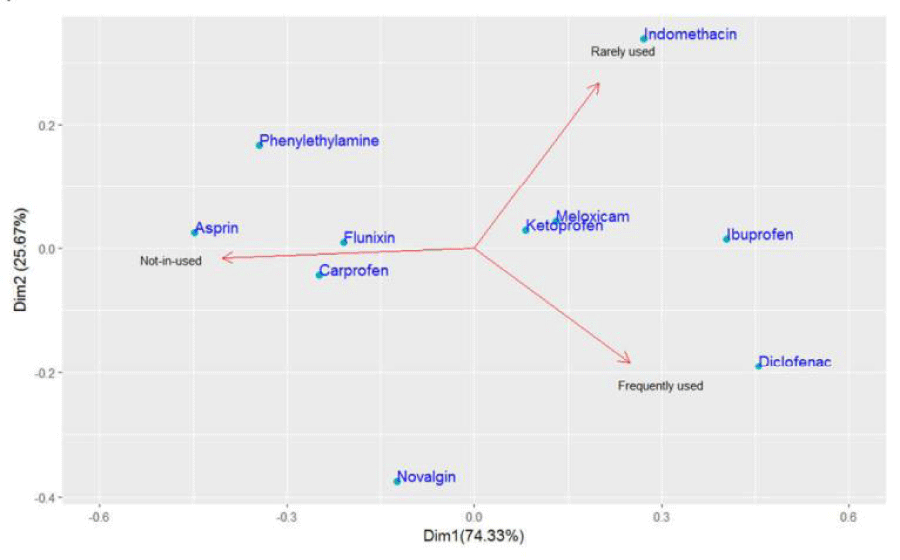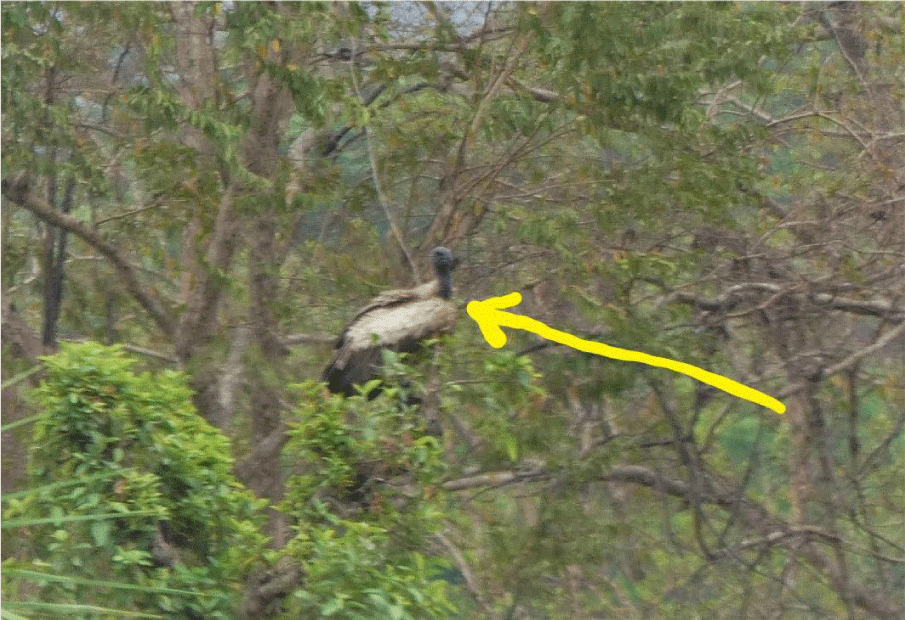International Journal of Veterinary Science and Research
A multivariate analysis of veterinary preferences for NSAIDs in Nigeria
Stephen Aina1*, Nkiru Omeje1, Joseph Onoja1, Delphine David2, Michael Awoniyi3, Somtochukwu Azugo4 and Muhtari Aminu-Kano1
2Department of Zoology, Taraba State University, Jalingo, Taraba State, Nigeria
3Institute of Biology, Universidade Federal da Bahia, Brasil, Brazil
4Gashaka Biodiversity Support Initiative, Taraba State, Nigeria
Cite this as
Aina S, Omeje N, Onoja J, David D, Awoniyi M, Azugo S, et al. (2022) A multivariate analysis of veterinary preferences for NSAIDs in Nigeria. Int J Vet Sci Res 8(1): 034-038. DOI: 10.17352/ijvsr.000109Copyright License
© 2022 Aina S, et al. This is an open-access article distributed under the terms of the Creative Commons Attribution License, which permits unrestricted use, distribution, and reproduction in any medium, provided the original author and source are credited.Vultures are obligate scavengers known to accomplish incredible ecological feats unmatched by other birds of prey. However, the role of animal health specialists in vulture conservation is under-emphasized in Nigeria, despite vulture’s explicit dependence on the carcasses of domesticated livestock under the regime of veterinary caregivers. In our research, we evaluate the perception of animal health specialists on vultures and the veterinary use of Nonsteroidal Anti-Inflammatory Drugs (NSAIDs) for livestock treatment in the study location. Data collated from a semi-structured questionnaire were analyzed using correspondence analysis to produce a simple visual display of the complex count data matrix. The prevalence of 10 NSAIDs was analyzed along 3 column attributes namely; Not-in-Use (NU), Rarely-Used (RU), and Frequently-Used (FU). The NSAIDs were statistically under the significant influence by the column attributes at 0.05 alpha-level (X2≤64.35;P<0.0000), with the principal axis accounting for 74.33% of the total inertia. Ketoprofen aggregated close to the centroid, while diclofenac and Ibuprofen were strongly associated with FU. Aspirin and Indomethacin inclined significantly towards the NU and RU axes, respectively. Despite the global consensus on the toxic influence of some NSAIDs on the vultures, about 90% of the research respondents were unaware of the hazards toxic NSAIDs are likely to impose on the vultures. Diclofenac has received less than enough focus, despite its extended use for livestock treatment in Nigeria. Future conservation interventions should therefore be designed to involve, engage and educate the veterinary practitioners in Nigeria.
Introduction
Vultures are nature’s most successful scavengers and they render specialized ecosystem services and are among the most threatened group of birds. According to [1], vultures also help to control livestock diseases, such as brucellosis, tuberculosis, and anthrax by disposing of infected carcasses. The obligate scavengers are universally known to feed on carrions thereby providing services that benefit themselves and humanity. Despite the ecological significance of vultures; about 61% of vulture species are threatened with extinction worldwide [2]. This decline has been attributed to several factors including poisoning, magical uses as well as the use of veterinary diclofenac and other toxic Nonsteroidal Anti-Inflammatory Drugs (NSAIDs). According to [3], scavenging bird species may be exposed to veterinary drugs when they feed on livestock carcasses (treated with harmful NSAIDs). This reality is often underrated in Africa.
Vultures are exposed to diclofenac when carcasses of animals treated with diclofenac before death are ingested. Vultures experimentally exposed to diclofenac or diclofenac-contaminated mammalian tissues died of acute renal necrosis and developed visceral gout, a condition characterized by deposition of uric acid crystals in kidneys and other organs [4-6]. Therefore, national and international conservation organizations as a result of the collapse of vulture populations have concluded that it is essential to place a ban on the use of veterinary diclofenac to remove it as a contaminant of the food of wild vultures [7]. This ban which was widely enforced in some parts of Asia and Europe was pivotal to the population recovery of vultures of the genus Gyps after the recorded Asian Vulture Crisis of the 1990s. The recovery was aided by the introduction of feeding sites free of contamination.
Vulture mortality from veterinary use of toxic livestock prophylaxis is probable in the study location, perhaps not to the extent reported in the Asia continent. The unintended consequences of selective evaluation of the entire spectrum of threats or the attempts to classify certain threats as intangible, as the case with NSAIDs in Africa, may act to drain successes recorded through prioritized actions. At the current levels of endangerment as highlighted in the IUCN Red List of threatened species, resource mobilization to lower all possible risks of attenuation to the vulture population is desirable. Our paper, therefore, attempts to call attention to smoothing the pathway of engagements with animal health specialists whose services may now or in future times will impact the progress of vulture conservation in Nigeria.
In this research, we examined the perceptions of veterinarians on vulture conservation and also characterized, using correspondence analysis, their preferences for the deployment of NSAIDs in the treatment and management of diseased conditions in livestock. Vultures in Nigeria are believed to be less impacted by the ills of NSAIDs, despite evidence alluding to the presence of Gyps Africanus (African White-backed Vultures) in the study location. This undertone is driving the restricted approach to the conservation of the most threatened groups of birds in the country. The aim of the research, therefore, is to prompt a holistic stakeholder inclusion to roundly and simultaneously address through research and onsite approaches, the multiple drivers of vulture population decline in Nigeria.
Materials and methods
Study area
Taraba state is located in the northeastern region of Nigeria and consists of sixteen (16) local government areas (LGAs). The state is sandwiched within the geographic coordinates; 9.1082°N – 12.0123°N and 6.5000°E – 9.6044°E. Taraba state is accessible through Cameroon, in addition to six (6) other states within Nigeria, namely: Benue, Nasarawa, Plateau, Bauchi, Gombe, and Adamawa states. In addition to playing host to Nigeria’s largest national park (Gashaka Gumti), its transnational boundary, different ecosystem types and pastoral occupation of the Fulani tribes are of great significance to the relative abundance of several species of vultures in the state. The landscape is however under intense modifications from commercial forest exploitation and mining operations.
Data collection
One hundred and twenty (120) questionnaires were distributed in batches of thirty (30) to each of the LGAs (Sardauna, Gashaka, Ardo-Kola, and Lau) as shown in Figure 1. Four (4) of the 16 LGAs were included in the sample statistics for the study based on nearness to a metropolis, protected area, transnational boundary, and prior knowledge of vulture distribution (Figure 1).
The questionnaires were administered to veterinary practitioners (and animal health workers) including specialists at veterinary clinics and animal drug stores, as well as practicing lecturers and some veteran final-year students of the Department of Animal Production, Taraba State University. Out of the 120 questionnaires distributed, a total of 82 questionnaires were retrieved, while seven (7) questionnaires with a high level (≥30%) of non-response were excluded from the analysis.
Ten (10) NSAIDs listed in the questionnaire are not exhaustive but were included to provide insight into what brands of NSAIDs are preferably available and generally used in the study location. The data collated was assembled in a cross-tabulated format and analyzed using correspondence, frequency, and chi-square analyses.
The research is structured to give insights into the following research questions:
- Are veterinary preferences for the listed NSAIDs significantly influenced by the ordinal scale of utility?
- What is the first choice of NSAIDs for the treatment of inflammatory conditions in livestock?
Results
The male group constituted approximately 81% of the respondents, while the female group made up only 19%. The respondents whose age bracket is in the range of 21 – 64, treated between 100 – 5300 cattle per annum. Only 10% of the respondents affirmed an awareness of the ecological importance of NSAIDs to vulture conservation. No significant relationship was found between the respondent’s Education levels (X2= 0.1760); Location (X2=2.1524) and awareness of the potential toxic implications of NSAIDs on vultures.
The NSAIDs itemized on the survey instruments are more or less known to be administered in the study location from the pilot review carried out by the team (Figure 2). The magnitude of scores along the ratings retained in the study alluded to the preferences of the reference NSAIDs for livestock treatment. For example, aspirin, indomethacin, and diclofenac recorded the highest scores of 31, 23, and 31; along the continuum of the Perception Index (PI) used in the study. The ratings are; Not-in-Use (NU), Rarely-Used (RU), and Frequently-Used (FU). For example (Table 1), aspirin and phenylbutazone aligned more closely along with the NU column attribute, while the distributions of indomethacin and diclofenac in the dimensional space are associated with the RU and FU attributes, respectively.
Multivariate analysis of veterinary preferences for NSAIDs
Correspondence analysis is a statistical technique that provides a graphical representation of (complex) cross-tabulations [8]. This method of multivariate analysis was deployed to simplify the complex data matrix in Table 1 above such that the relationship between the NSAIDs and the perception ratings is graphically displayed in Figure 2. The relationship of dependence of the row variables on the column variables is significant (X2= 64.35; p<0.0000), while the principal axis explained 74.33% of the total inertial in the data. Both axes accounted for the total variance.
From the test statistics, the interpretations from the analysis are reliable at 5% error probability margin. Meloxicam and Ketoprofen, however, aggregated slightly away from the centroid (origin) of the graph. This would be interpreted as an indication of passivity towards the column attributes if both drugs fall exactly on the centroid. However, the behavior of both drugs in the dimensional space revealed a wider angle of inclination tangent to the FU than the RU; thus, implying that both drugs had relatively higher scores on the FU (Figure 2).
Discussion
Nomadic pastoralism, in addition to the provision of dairy products and the enhancement of the income-earning potentials of local communities, has strong a linkage with vulture distribution in the study location. This association with the vultures puts the highlights on veterinary practitioners who provide interspersed animal health services as important to the plan for vulture conservation in Nigeria. Veterinary occupation is dominated by the male gender mostly due to the energetic requirements of livestock handling and the strong cultural supremacy that places more premium on male dominance (Male=81%; Female= 19%) in northern Nigeria. The level of awareness among the veterinarians, although very low (≤10%), is independent of the location of practice and the level of educational attainment of the respondents. The implication, therefore, is that there is an acute shortfall of awareness creation on NSAIDs to which neither a variation in location or education level conferred any advantage of enlightenment on the veterinary practitioners.
The choice of NSAIDs among animal health specialists is influenced by the ordinal scale of utility retained for the study (X2= 64.35; P<0.0000). The preference level indicated on the row (NSAIDs) attributes is a function of clearly defined options on the column (ordinal scale) attribute. The distribution of diclofenac/ibuprofen/novalgin close to the FU axis is an indication that drugs with diclofenac, ibruprofen, and novalgin as active ingredients are preferably used for the treatment of inflammatory conditions in livestock in the study area. Aspirin is less preferable and could assume a non-use status given its proximity to the NU axis (Figure 2). Toxic NSAIDs have been widely reported as the main cause of the rapid decline in the Gyps vultures’ population in the Asian continent. Gyps genus is of great concern, as diclofenac toxicity has been established across the group, including in the African White-backed Vulture (AWBV) [9-11]. Although, [12], in their work on the multi-species action plan for African-Eurasian vultures, concluded that the species may be extirpated in Nigeria, and hanging on in a few strongholds in Ghana and Niger; the recent sightings of the AWBVs by [13] in their published work on the critically endangered vultures in Nigeria validates the need for more research and continuous engagements with relevant stakeholders to guide important future documents and campaigns on NSAIDs toxicity to vultures Figure 3.
In the study location, both the hooded and AWBVs are reportedly sighted more frequently than any other species of vultures in human-dominated landscapes and protected areas. No literature, as far as the search for publications conducted, has established diclofenac toxicity to the hooded vultures. Nonetheless, the species mingling tendencies of vultures could unfavorably impact populations of the vulnerable AWBVs if toxic NSAIDs are accidentally introduced into their food chain. In addition, other kinds of NSAIDs other than diclofenac had also been reported in the literature as toxic to the Gyps and the non-Gyps vultures. Diclofenac, carprofen, flunixin, ibuprofen and phenylbutazone are toxic to vultures [14]. A report published by [15], also included aceclofenac and nimesulide in the list of unsafe NSAIDs.This spectrum of toxic veterinary drugs reported above highlights the possibility of harmful NSAIDs becoming a future subject of serious emphasis in Africa. More studies are needed to monitor the presence of NSAIDs in livestock carcasses, especially in areas beyond Asia [16], and find compatible solutions for livestock care and vulture conservation, learning from the massive decline of Asian populations due to the use of diclofenac [17].
Conclusion
The outlook of the study conducted on the Animal Health Workers (AHWs) perception of the impact of NSAIDs on vultures is evident that this category of stakeholders is largely unaware of what is perhaps one of the most significant topical issues on vulture conservation. This may have resulted from the exclusion of AHWs from vulture conservation campaigns and the notion of triviality attached to NSAIDs poisoning in Africa. According to [11], diclofenac is almost certainly toxic to all Gyps spp. and strong efforts must be taken to ensure that veterinary diclofenac products are not licensed or introduced to the African continent. This recommendation seemed to have been unheeded. The study revealed clearly that diclofenac and other vulture-killing NSAIDs are available and within reach of AHWs; who are mostly not inducted into any existing local action plans for vulture population recovery and conservation. This trend should be reversed to maximize the chances of vulture conservation and protection in the study location while also extending advocacy for the use of vulture-safe NSAIDs such as meloxicam, and tolfenamic acid recently nominated by [18] in their research on the Gyps vultures of India.
Conflict of interest
The authors affirm the non-existence of conflicts, either in form or concept, in all components of the research.
The authors appreciate the management of the British Birdwatching Fair and BirdLife International, UK, for funding and supporting the various aspects of the research through the conservation award initiative to the project team.
- Coetzer JAW, Thomson GR, Tustin RC (1994) Infectious Diseases of Livestock with Special Reference to Southern Africa. Cape Town; New York: Oxford University Press. Link: https://bit.ly/3uVV97x
- Ogada DL, Torchin ME, Kinnaird MF, Ezenwa VO (2012) Effects of vulture declines on facultative scavengers and potential implications for mammalian disease transmission. Conserv Biol 26: 453-460. Link: https://bit.ly/3LIQRHg
- Gómez-Ramirez P, Blanco G, Garcia-Fernandez AJ (2020) Validation of Multi-Residue Method for Quantification of Antibiotics and NSAIDs in Avian Scavengers by Using Small Amounts of Plasma in HPLC-MS-TOF. Int J Environ Res Public Health 17: 4058. Link: https://bit.ly/3JaJGGl
- Oaks JL, Gilbert M, Virami MZ, Watson RT, Meleyer CU, et al. (2004) Diclofenac residues as the cause of vulture population decline in Pakistan. Nature 427: 630–633. Link: https://go.nature.com/3J8D775
- Meteyer CU, Rideout BA, Gilbert M, Shivaprasad HL, Oaks JL (2005) Pathology and proposed pathophysiology of diclofenac poisoning in free-living and experimentally exposed oriental white-backed vultures (Gyps bengalensis). J Wildl Dis 41: 707–716. Link: https://bit.ly/36RK0Nc
- Swan GE, Cuthbert R, Quevedo M, Green RE, Pain DJ, et al. (2006) Toxicity of diclofenac to Gyps vultures. Biol Lett 2: 279–282. Link: https://bit.ly/3ucaxO5
- ISARPW (2004) Report on the International South Asian Recovery Plan Workshop. Buceros 9: 1–48. Link: https://bit.ly/3LF5Kun
- Yelland PM (2010) An Introduction to Correspondence Analysis. Mathematica Journal 12. Link: https://bit.ly/36U25tK
- Van Wyk E, van der Bank H, Verdoorn GH (2001) Allozyme variation in four populations of African whitebacked vultures (Gyps africanus) and phylogenetic relationships between four vulture species from southern. Africa. Biochem Syst Ecol 29: 485-512. Link: https://bit.ly/3x9YqCS
- Swan G, Naidoo V, Cuthbert R, Green RE, Pain DJ, et al. (2006) “Removing the Threat of Diclofenac to Critically Endangered Asian Vultures.” PLOS Biology 4: e66. Link: https://bit.ly/3r70mIv
- Naidoo V, Wolter K, Cuthbert R, Duncan N (2009) Veterinary diclofenac threatens Africa’s endangered vulture species. Regulatory Toxicology and Pharmacology 53: 205–208. Link: https://bit.ly/3NODJlJ
- Botha AJ, Andevski J, Bowden CGR, Gudka M, Safford RJ, et al. (2017) Multi-species Action Plan to Conserve African-Eurasian Vultures. CMS Raptors MOU Technical Publication No. 5. CMS Technical Series No. xx. Coordinating Unit of the CMS Raptors MOU, Abu Dhabi, United Arab Emirates. Link: https://bit.ly/35JAIlM
- Aina S, Azugo S, Joseph N, Gapkong E, Saidu Y, et al. (2022) A Survey of the Critically Endangered Vultures of Gashaka Gumti National Park, Nigeria. International Journal of Scientific Research in Biological Sciences 9: 17-22. Link: https://bit.ly/36U2jRC
- SAVE (2016) Flunixin: a vulture-toxic drug. SAVE.11.2016. Link: https://bit.ly/37hkbGa
- Raptors (2021) New vulture-safe veterinary painkiller discovered. Link: https://bit.ly/3LCxM9I
- Jimenez-Lopez O, Julia P, Andre N, Irene B (2021) Non-Steroidal Anti-Inflammatory Drugs (NSAIDS) and their Effect on Old World Vultures: A Scoping Review. J Raptor Research 55: 297-310. Link: https://bit.ly/37hth5A
- Camiña A, Jose A, François S, Olivier D (2018) Potential exposure to diclofenac in Spain of European vultures. Vulture News 75.
- Chandramohan S, Mallord JW, Mathesh K, Sharma AK, Mahendran K, et al. (2021) Experimental safety testing shows that the NSAID tolfenamic acid is not toxic to Gyps vultures in India at concentrations likely to be encountered in cattle carcasses. bioRxiv 1-30. Link: https://bit.ly/3x7d5yK
Article Alerts
Subscribe to our articles alerts and stay tuned.
 This work is licensed under a Creative Commons Attribution 4.0 International License.
This work is licensed under a Creative Commons Attribution 4.0 International License.




 Save to Mendeley
Save to Mendeley
